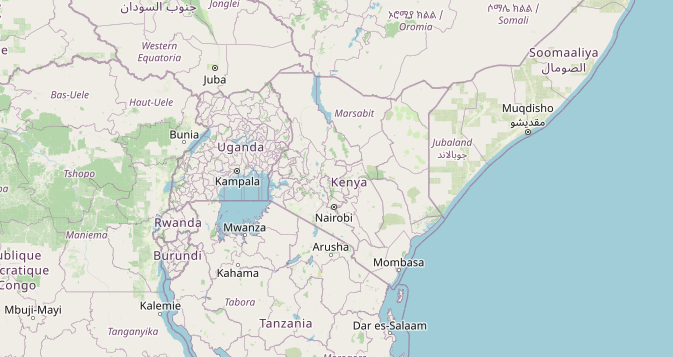Although we wrote earlier in the day that the Internet was not shut down in Kenya today during protests, it now appears that there were disruptions to Internet connectivity that occurred.
[UPDATE: Internet connectivity appears to have returned to normal levels by 01:00 UTC on 26 June 2024.]
To be clear, we cannot verify whether the disruption was due to actions of the Kenyan government or as a result of the submarine cable outage as indicated by Safaricom and Airtel. The situation is extremely tense and chaotic in Nairobi right now, and communication from within the region is challenging. (Read more: BBC Live, Aljazeera live)
We will continue updating this post as more information becomes available.
If You Want To Help
If you are located in Kenya, you can help test Internet connectivity by running OONI’s mobile probe app on your mobile device.
Status on 26 June at 01:00 UTC
The good news is that Internet connectivity seems to be returning to Kenya. IODA, Cloudflare Radar, and OONI all show a return to normal activity levels.
What continues to be a mystery is whether the Kenyan government was in fact involved with the disruptions. Mobile providers Safaricom and Airtel both issued statements that a disruption was due to issues with two subsea cables. The nearby countries of Burundi, Rwanda, and Uganda also experienced connectivity drops – and all three get their upstream connectivity from Kenya – which would be consistent with a subsea cable cut.
However, messages on social media and in private groups would seem to indicate that the subsea cables were disconnected at landing stations at the instructions of the Kenyan government. Access Now and the KeepItOn Coalition have also issued a strong statement indicating the the disruptions appeared intentional and calling on the government of Kenya to restore Internet connectivity.
We may never know exactly what happened but we are pleased to see the return of connectivity. We hope for the people of Kenya that the Internet remains on for them from this point forward.
Returning to the data, IODA shows that their active probing resumed the usual levels around 9:30pm UTC:
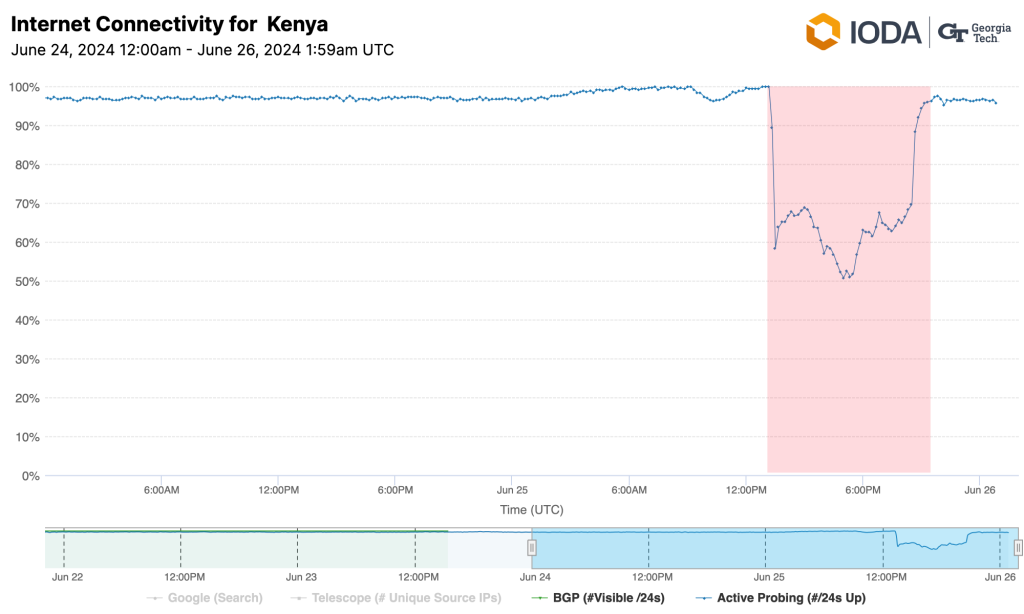
Cloudflare Radar similarly shows that the traffic levels (dark blue and lighter blue) returned to similar levels as last week around 9 – 9:30pm UTC:
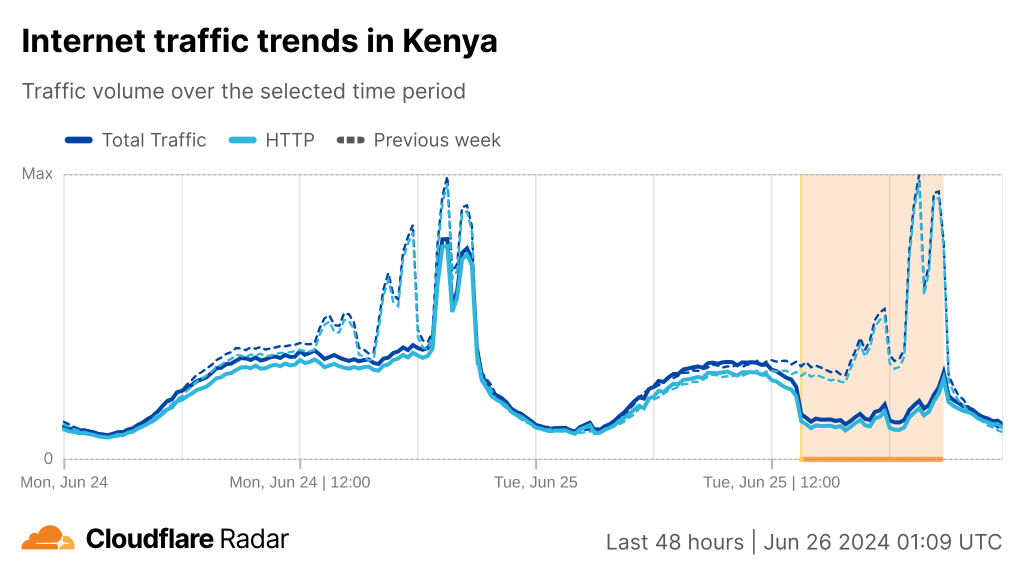
OONI also shows that by 8 or 9pm UTC, there were no more anomalies in Signal or Telegram messaging:
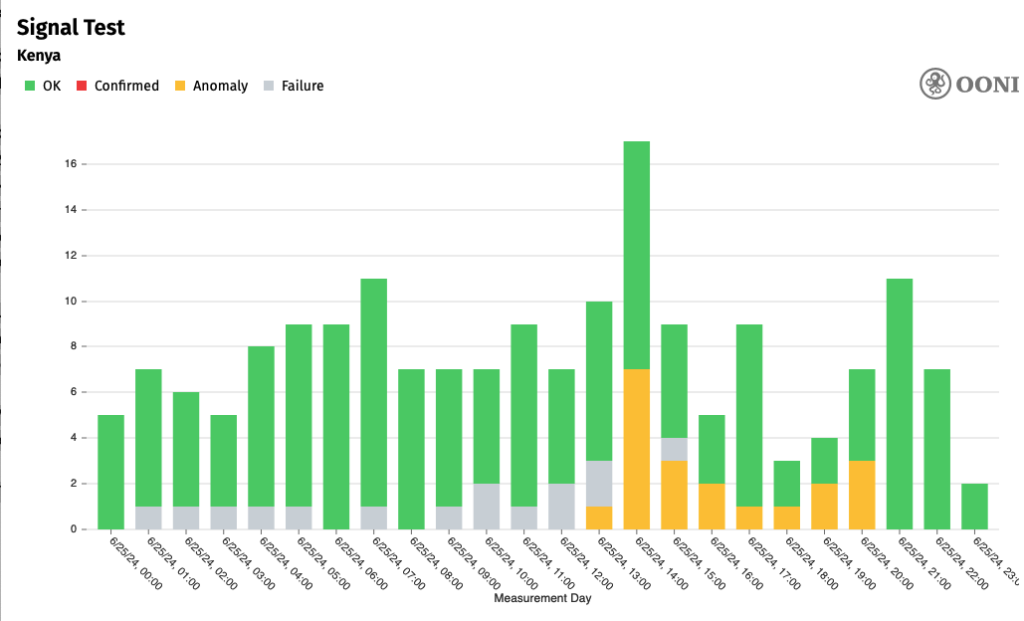
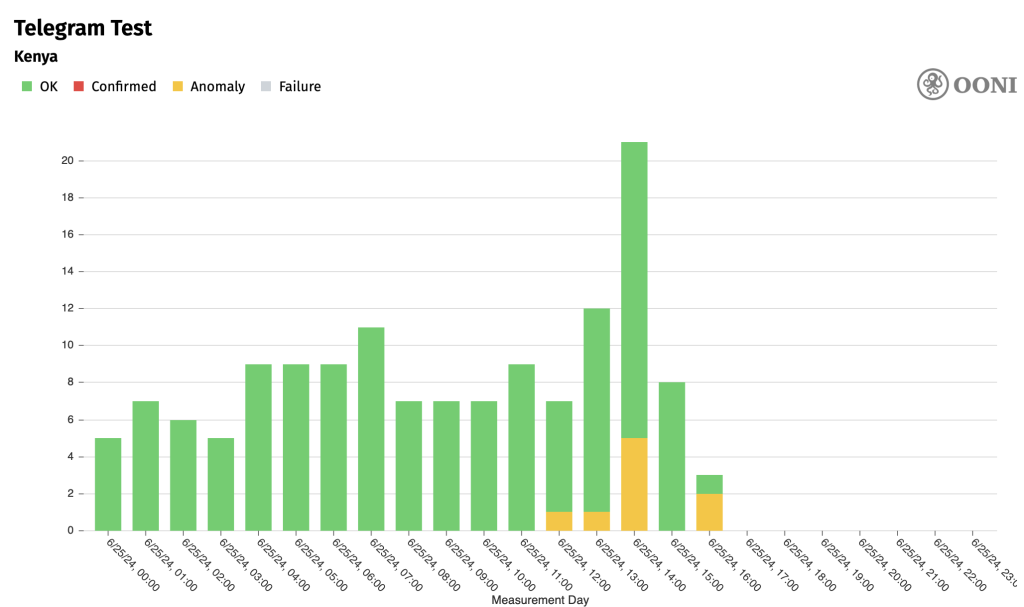
For the moment, it looks like whatever disruptions occurred are now past.
Status on 25 June at 16:00 UTC
At the time I am writing this, Cloudflare Radar shows a clear drop in connectivity across Kenyan networks (also reported on X):
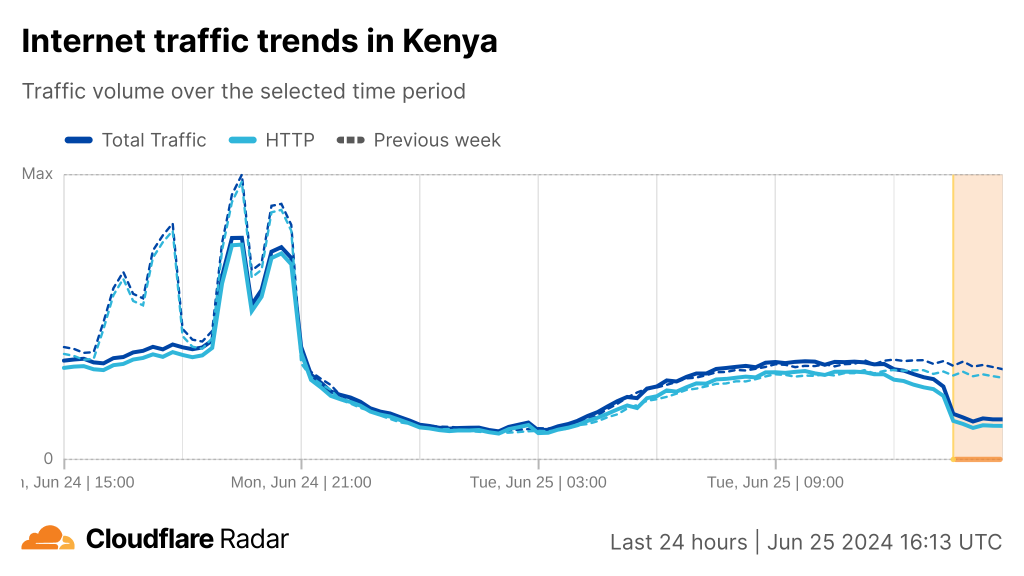
IODA also shows a very visible drop starting arount 13:20 UTC today (also reported on X):
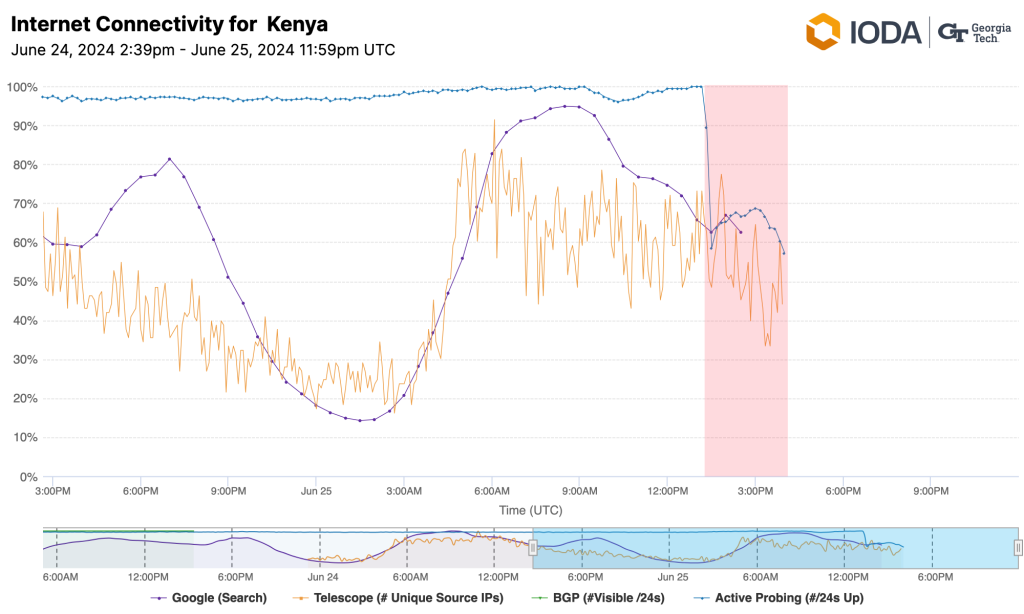
OONI is also showing anomalies in messaging connectivity for both Telegram and Signal:
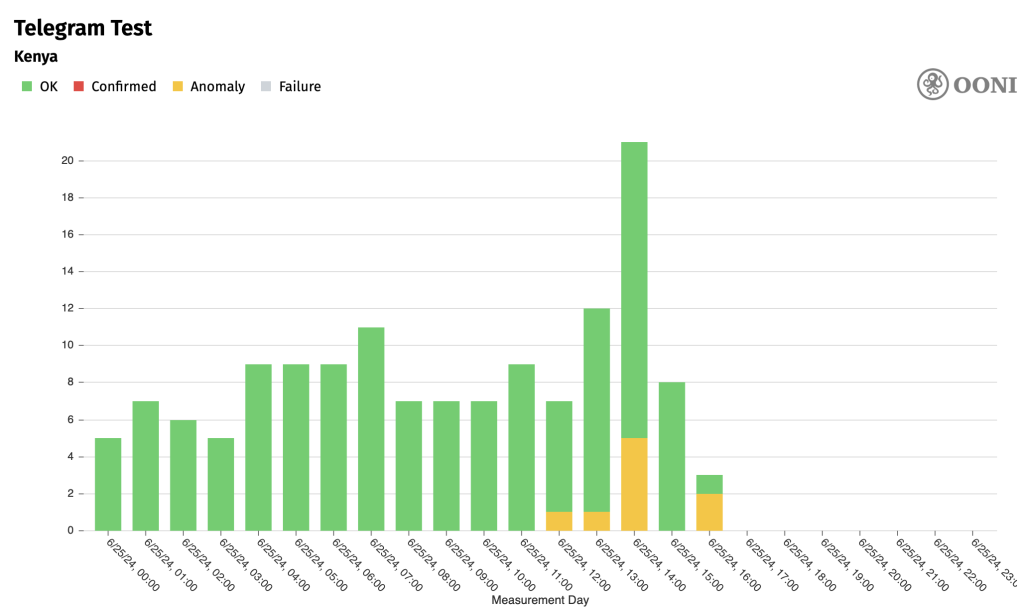
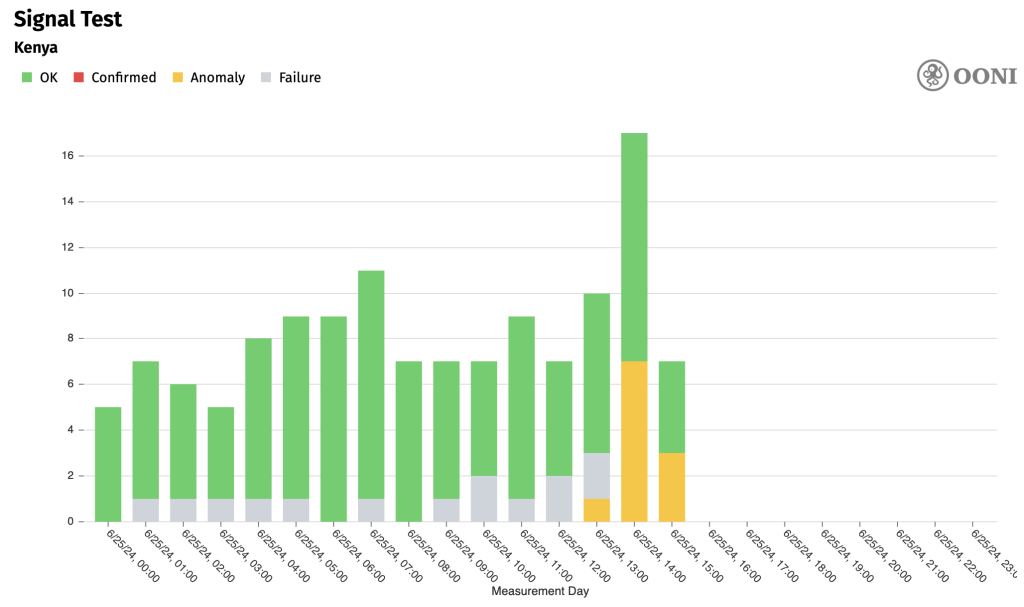
Safaricom, a mobile provider in Kenya, has issued a statement that there are connectivity issues related to submarine cables. Mobile provider Airtel also issued a similar statement.

However, we have no way to independently verify the accuracy of this statement. It is not clear from other sources if there is an actual outage, as users from Kenya are reporting acceptable service on other Internet service providers.
Kenyan Internet Infrastructure and the East African Internet
Kenya’s Internet is not just important for Kenyan users, but also the Internet experience for Internet users across much of East Africa. As a result, the effects of today’s Internet disruption are being felt by Internet users in Burundi, Rwanda, Uganda, South Sudan and Tanzania.
Kenya is a hub for the Internet in East Africa. Over the last ten years, Kenya was able to localize Internet traffic – from 30% in 2012 to 70% in 2019 – by growing its IXP membership, through attracting local, regional, and international networks, including popular Content Delivery Networks (CDNs). For other networks in the wider region, connecting with Kenya’s infrastructure has allowed their users to benefit from these improvements. Users from Uganda, for instance, might connect to a content delivery network at KIXP, one of Kenya’s largest Internet exchange points – rather than connecting to a cache outside the region. Additionally, Kenya hosts several undersea cables providing connectivity to the rest of the global Internet which have seen it enjoy some of the best Internet Resilience in the region.
Using Pulse’s new tool to measure local content, one can see that under 60% of the most popular content in Burundi, Rwanda, or Uganda is hosted locally. That means that for users in those countries, 40% of the most popular content must be accessed through international links – some of which are likely to go through Kenya since they are landlocked countries.
Whether an Internet shutdown or not, today’s outage show the importance of Kenya’s Internet infrastructure to Internet users in the wider region.
The Internet has no borders, and the impact of Internet outages are often felt far beyond their epicenters.
Please check this page later as we will continue to update it as more information becomes available.
Image: OpenStreetMap

